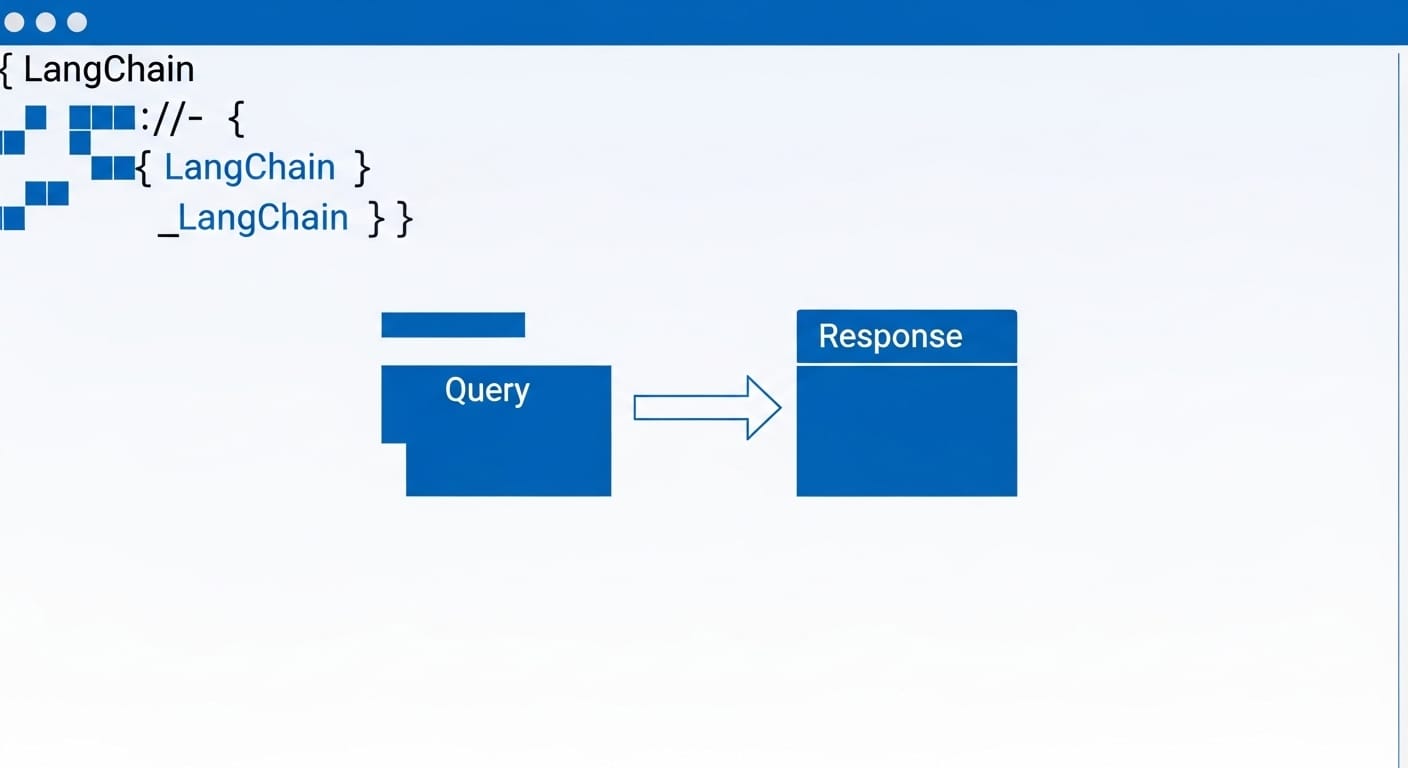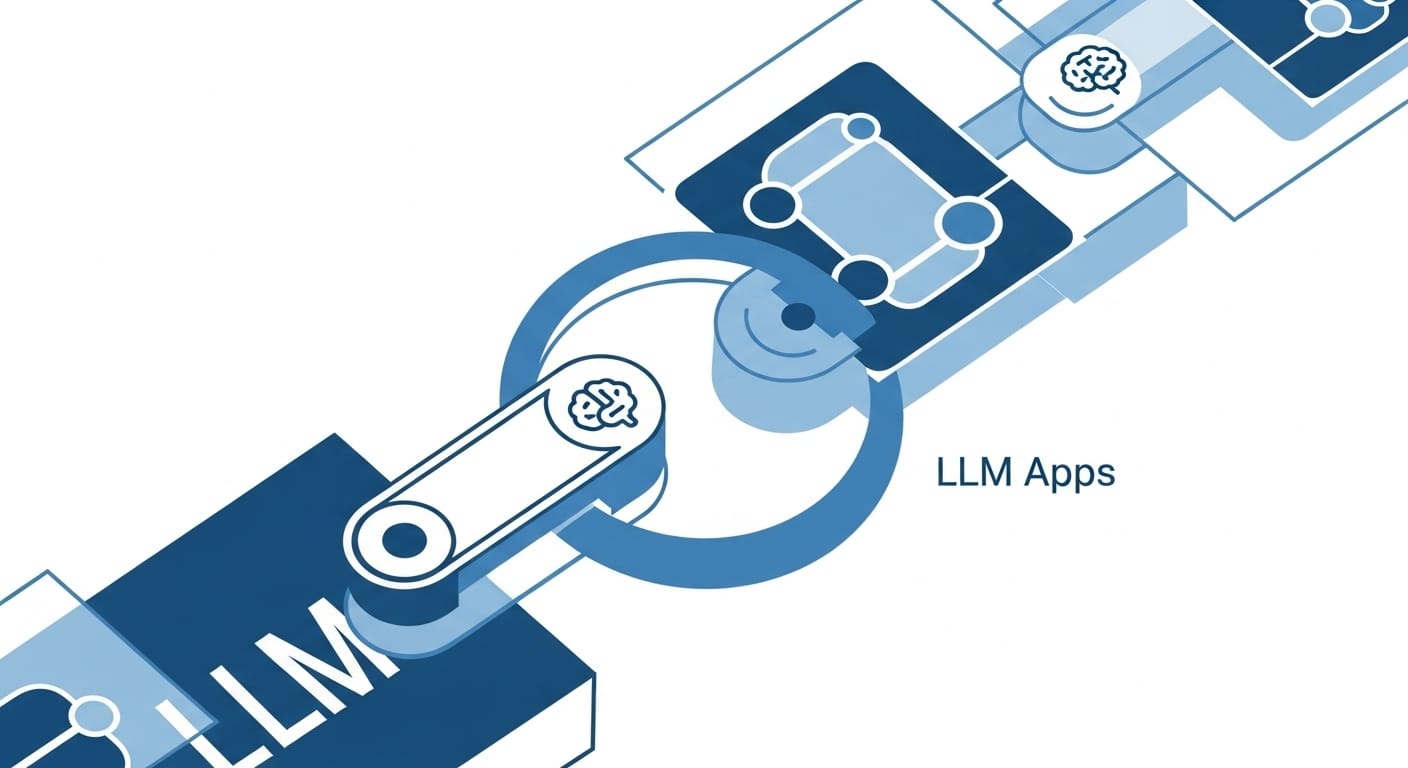Hey future innovators and tech enthusiasts! Are you ready to dive into the exciting world of Large Language Models (LLMs) and build some truly amazing applications? We certainly are! At Inov8ing Mures Camp, we’re all about exploring the latest trends in engineering and IT, and today, we’re taking a deep dive into an open-source tool that’s changing the game for LLM development: LangChain.
Key Takeaways
- LangChain is an open-source framework that simplifies building applications powered by Large Language Models (LLMs).
- It provides modular components like Chains, Agents, and Memory to create complex, context-aware AI workflows.
- Installation is straightforward using `pip`, and it integrates seamlessly with various LLM providers like OpenAI.
- LangChain enables developers to connect LLMs with external data sources and tools, reducing complexity and accelerating development.
- It’s perfect for creating intelligent chatbots, advanced Q&A systems, content generation tools, and much more.
Introduction: What is LangChain and What Problem Does It Solve?
Imagine having the power to build sophisticated AI applications that can understand, generate, and process human language, but without getting bogged down in intricate details. That’s exactly what LangChain helps us achieve!
LangChain is an open-source framework designed to simplify the development of applications powered by Large Language Models (LLMs). Think of LLMs as the brains of your AI application, capable of incredible feats of language understanding and generation. However, connecting these powerful models to real-world data, tools, and creating multi-step interactions can be quite complex. This is where LangChain steps in!
It acts as a bridge, providing a standard interface for models, embeddings, vector stores, and much more. LangChain abstracts away the complexities of integrating LLMs with diverse data sources and external systems, making prompt engineering more efficient. This means we can focus on the innovative logic of our applications rather than wrestling with low-level integrations. Whether you’re aiming to build a smart chatbot, a sophisticated question-answering system, or an autonomous agent, LangChain provides the building blocks to make it happen more easily and efficiently.
Key Features
LangChain is packed with powerful features that make building LLM-powered applications a breeze. Here are some of its most important capabilities:
- Chains: These allow you to link multiple tasks together into a single, cohesive workflow. For instance, you can chain an LLM query with data fetching from an API and then transform the results. This enables complex, multi-step operations that are easy to manage and reuse.
- Agents: Agents bring a dynamic element to your applications. They empower LLMs to make decisions about which “tools” to use in real-time based on the context of a query. Imagine an AI that can decide to use a calculator for a math problem or a search engine for up-to-date information!
- Memory: Crucial for conversational AI, LangChain’s memory features allow your applications to retain context across interactions. This means a chatbot can remember previous parts of a conversation, leading to more natural and coherent dialogues.
- Prompt Templates: These provide a structured and reproducible way to generate prompts for LLMs. They help standardize how user input is presented to the model, ensuring consistency, clarity, and better AI-generated responses.
- Document Loaders & Indexing/Retrieval: LangChain makes it easy to connect your LLMs to various external data sources, such as documents, databases, and APIs. It also facilitates Retrieval Augmented Generation (RAG), allowing models to fetch and use relevant information from these sources to generate more accurate and context-rich responses.
- Integrations: With a vast library of integrations, LangChain seamlessly connects with popular LLM providers like OpenAI and Hugging Face, as well as various vector stores and other tools. This flexibility means you can easily swap models and tools as your project evolves. Speaking of LLMs, have you checked out our guide on Hugging Face Transformers: A Beginner’s Guide to AI Models? It’s a great complement to your LangChain journey!
- LangChain Expression Language (LCEL): This is a declarative way to compose chains and other components, offering a powerful and readable syntax for orchestrating your LLM applications.
How to Install/Set Up
Getting started with LangChain is quite straightforward. We’ll walk you through the basic steps to set up your Python environment and install the necessary packages.
Prerequisites:
- Python 3.7 or later installed on your system.
- `pip`, Python’s package installer, should also be available.
Step-by-Step Installation:
- Create a Virtual Environment (Recommended):
Using a virtual environment is a best practice to manage project dependencies and avoid conflicts with your system’s Python packages. Open your terminal or command prompt and run:
python -m venv langchain_envThen, activate your virtual environment:
- On macOS/Linux:
source langchain_env/bin/activate - On Windows (Command Prompt):
langchain_env\Scripts\activate - On Windows (PowerShell):
.\langchain_env\Scripts\Activate.ps1
- On macOS/Linux:
- Install LangChain:
Once your virtual environment is active, install the core LangChain library:
pip install langchain - Install an LLM Provider Integration (e.g., OpenAI):
To interact with a Large Language Model, you’ll need to install the specific integration package for your chosen provider. For this tutorial, we’ll use OpenAI:
pip install langchain-openai - Set Your API Key:
Most LLM providers require an API key for authentication. It’s best practice to set this as an environment variable to keep it secure. Replace
"YOUR_OPENAI_API_KEY"with your actual key.import os
os.environ["OPENAI_API_KEY"] = "YOUR_OPENAI_API_KEY"For a production environment, you might load this from a secure configuration file or a secrets manager.

How to Use (Usage Examples)
Now that we have LangChain installed, let’s look at some practical examples of how to use it to interact with an LLM.
Example 1: Simple LLM Interaction
This is the most basic way to send a prompt to an LLM and get a response.
from langchain_openai import ChatOpenAI
from langchain_core.messages import HumanMessage
# Initialize the ChatOpenAI model
# Ensure your OPENAI_API_KEY is set as an environment variable or passed directly
llm = ChatOpenAI(model="gpt-3.5-turbo", temperature=0.7)
# Invoke the LLM with a simple human message
response = llm.invoke([HumanMessage(content="Tell me a fun fact about computer science.")])
# Print the content of the response
print(response.content)When you run this code, the LLM will process your query and return a fun fact about computer science. It’s like having a super-smart assistant right at your fingertips!
Example 2: Using Prompt Templates for Structured Input
Prompt templates are incredibly useful for providing consistent instructions and structuring your inputs to the LLM. They help define a clear persona or context for the model.
from langchain_openai import ChatOpenAI
from langchain_core.prompts import ChatPromptTemplate
# Initialize the ChatOpenAI model
llm = ChatOpenAI(model="gpt-3.5-turbo", temperature=0.7)
# Define a chat prompt template with a system message and a user message
prompt_template = ChatPromptTemplate.from_messages(
[
("system", "You are a helpful assistant specialized in providing career advice for students in engineering and IT."),
("user", "I'm interested in {field}. What are some emerging trends and essential skills I should focus on?"),
]
)
# Create a chain by combining the prompt template and the LLM
career_advice_chain = prompt_template | llm
# Invoke the chain with a specific field
response = career_advice_chain.invoke({"field": "cybersecurity"})
# Print the advice
print(response.content)In this example, the system message sets the persona of the AI, ensuring that the response is tailored to career advice for engineering and IT students. We can easily change the {field} variable to get advice on different areas, such as “artificial intelligence” or “data science.” This modularity is a core strength of LangChain and can be extended to more complex scenarios, like those discussed in our post on AI in SaaS: Reshaping the Future of Business Technology.
Conclusion
LangChain truly revolutionizes the way we approach building applications with Large Language Models. Its modular architecture, powerful features like chains, agents, and memory, and extensive integrations make it an indispensable tool for any developer looking to harness the full potential of AI. We’ve seen how it simplifies complex workflows, enables context-aware interactions, and provides a flexible framework for rapid prototyping and deployment.
Whether you’re creating intelligent chatbots to enhance customer support, developing advanced Q&A systems for internal knowledge bases, or even building tools for automated content generation, LangChain offers the robust foundation you need. The possibilities are truly endless!
Are you excited to put these skills into practice and connect with other passionate individuals in the engineering and IT fields? Then you absolutely need to check out our annual Inov8ing Mures Camp! It’s the perfect opportunity to learn new trends, showcase your projects, and network with like-minded innovators. We can’t wait to see what incredible LLM-powered applications you’ll build!




Permalink
Permalink
Permalink
Permalink